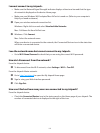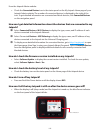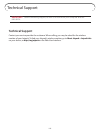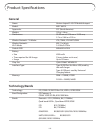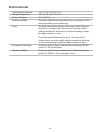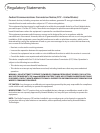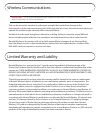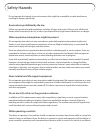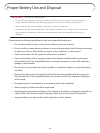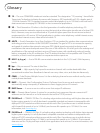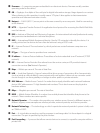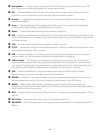
124
Glossary
● 1X — The core CDMA2000 wireless air interface standard. The designation “1X”, meaning 1 times Radio
Transmissio Technology, indicates the same radio frequency (RF) bandwidth as IS-95: a duplex pair of
1.25 MHz channels. The 1X standard supports packet data speeds of up to 153 kbits/s with real world
data transmission averaging 80-100 kbit/s in most commercial applications.
● 3G — Third Generation. 3G refers to the third generation of mobile telephony technology. 3G
telecommunication networks support services that provide an information transfer rate of at least 200
kbit/s. However, many services advertised as 3G provide higher speed than the minimum technical
requirements for a 3G service. 3G finds application in wireless voice telephony, mobile Internet access,
fixed wireless Internet access, video calls and mobile TV.
● 4G LTE — Fourth Generation Long Term Evolution. LTE is a standard for wireless data communications
technology and an evolution of the GSM/UMTS standards. The goal of LTE is to increase the capacity
and speed of wireless data networks using new DSP (digital signal processing) techniques and
modulations that were developed around the turn of the millenium. A further goal is the redesign and
simplification of the network architecture to an IP-based system with significantly reduced transfer
latency compared to the 3G architecture. The LTE wireless interface is incompatible with 2G and 3G
networks, so that it must be operated on a separate wireless spectrum.
● 802.11 (a, b, g, n) — A set of WLAN communication standards in the 2.4, 3.6 and 5 GHz frequency
bands.
● bps — Bits per second. The rate of data flow.
● Broadband — High-capacity high-speed transmission channel with a wider bandwidth than
conventional modem lines. Broadband channels can carry video, voice, and data simultaneously.
● CDMA — Code Division Multiple Access. It is the underlying channel access method used by some
mobile phone standards.
● DHCP — Dynamic Host Configuration Protocol. Software found in servers and routers that
automatically assigns temporary IP addresses to clients logging into an IP network.
● DHCP Server — A server or service with a server that assigns IP addresses.
● DNS — Domain Name System. A system for converting host names and domain names into IP
addresses on the Internet or on local networks that use the TCP/IP protocol.
● EV-DO Rev 0 — CDMA EV-DO Rev. 0 is a leading-edge wireless technology with higher data rates and
higher system capacity. It is a fully backward compatible standard and remains interoperable with
deployed EV-DO networks and devices around the world. Rev 0 provides access to mobile devices
with forward link speeds of up to 2.4 Mbit/s, and reverse link speeds up to 152 kbit/s. For more
information, visit www.cdg.org.
● EV-DO Rev A — CDMA EV-DO Rev. A is a leading-edge wireless technology with higher data rates and
higher system capacity. It is a fully backward compatible standard and remains interoperable with
deployed EV-DO networks and devices around the world. Rev A provides access to mobile devices
with forward link speed of up to 3.1 Mbit/s, and reverse link speeds up to 1.8 Mbit/s. The increased
data rates on Rev. A’s physical layer enable richer applications and services. For more information, visit
www.cdg.org.



